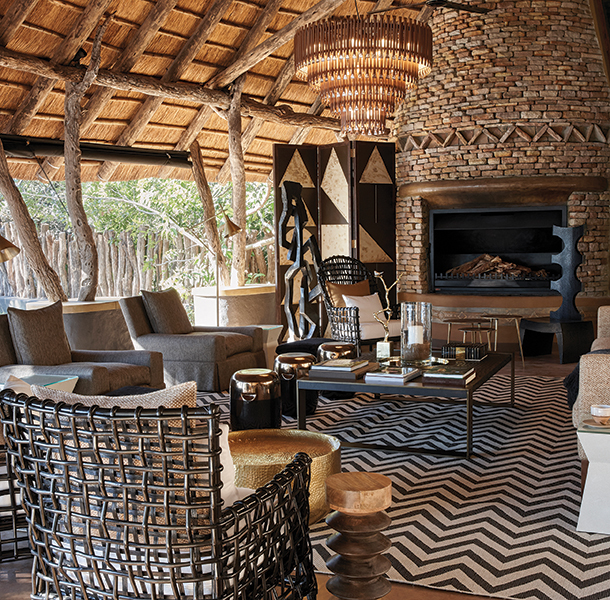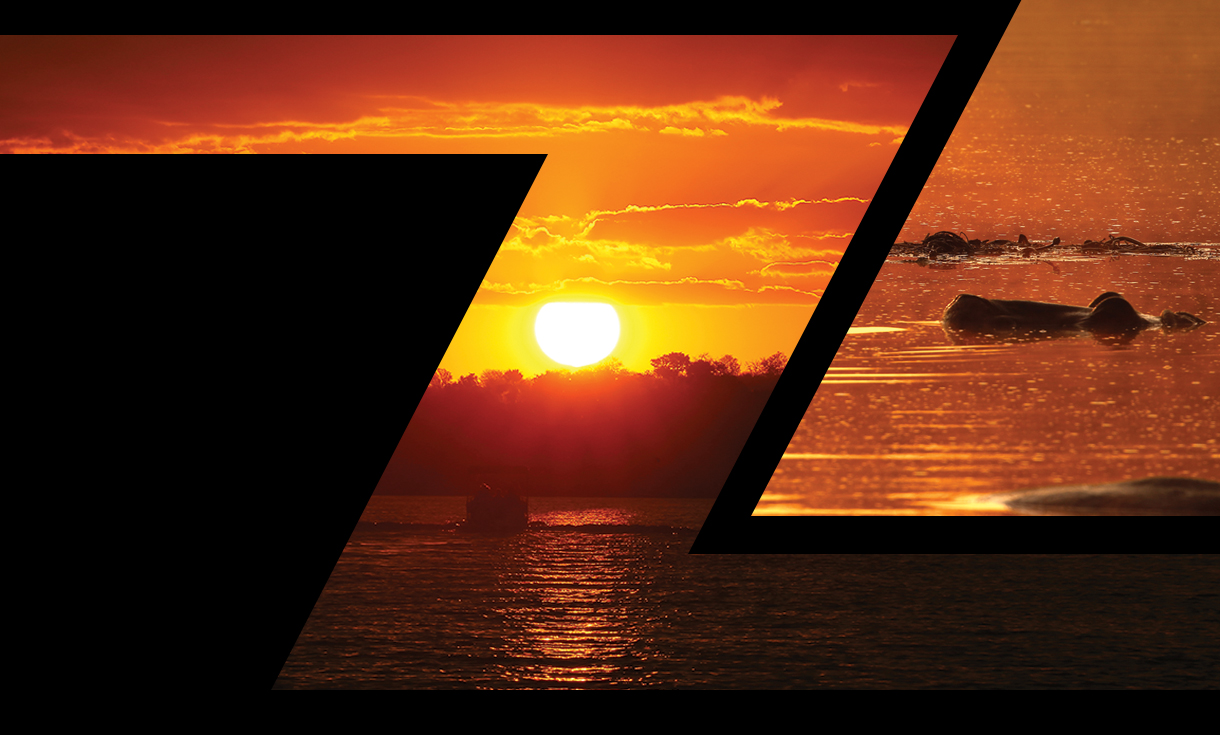
The sun sets on the Zambezi River in Zimbabwe while hippo linger at the surface. iStock (2)
Returning to Zimbabwe
A new sense of optimism is sweeping the southern Africa republic, and positioning it as a top stop on the luxury safari circuit.
From a motorboat speeding across Lake Kariba, it appears as if the little black dot floating in the distance is moving. Given that the object is almost a mile from the mainland, it’s unlikely that it’s an animal, the captain says. It is the wrong shape to be a crocodile. And it’s far too big to be a bird.
Humphrey Gumpo, the Zimbabwean guide leading two guests on a bespoke nine-night Roar Africa (roarafrica.com) expedition around his homeland, finally nails the identity of the mystery swimmer by looking through his binoculars. “Look at those ears,” he says triumphantly. “I can’t believe I am saying this in the middle of a lake, but it’s a waterbuck. And it looks like it’s got an unwelcome passenger.”
Waterbuck are a regular sight on the shores of northern Zimbabwe. But this is the first time since Gumpo started guiding 20 years ago that he has seen one swimming across one of the world’s largest man-made lakes—and he is unsure if the beast will make it. Not only is the young male heading to an island that’s a mile from the mainland, but its “passenger” is a crocodile.
Gumpo’s guests want to rescue it, but the captain is unsure. If they go too close, he says, opening a debate about the ethics of interfering with nature, the beast could panic and drown. So, keeping its distance, the boat quietly follows, until, at last, the struggling beast shakes the crocodile off with a toss of its head, and, when it reaches the shore, bounds past a group of surprised-looking baboons, and joins its grazing herd.
“Another brilliant morning in Africa,” Gumpo grins, clearly relieved that no one had to witness the death of a brave young buck in the grim yellow jaws of a prehistoric-looking crocodile. “Anyone for a fresh coffee and muffin to celebrate?”
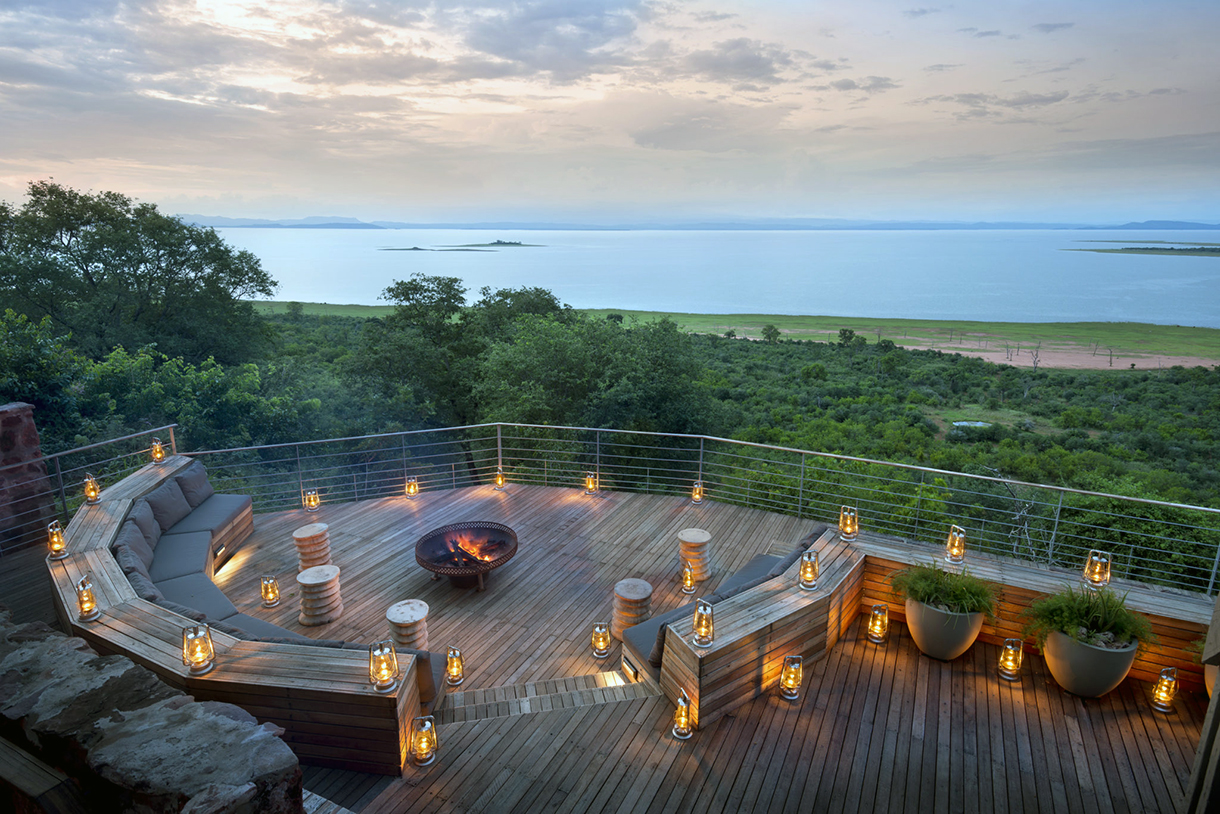
The oversized deck, comfortable living and dining areas, beachside pool, and large entertainment room at Bumi Hills Safari Lodge on Lake Kariba. Courtesy Bumi Hills Safari Lodge
In many popular African safari destinations—whether that’s the Maasai Mara in Kenya, the Sabi Sands in South Africa, or the Serengeti in Tanzania—such an extraordinary wildlife spectacle might be witnessed by dozens of travelers. Here, there is no one else around.
In this remote area of Lake Kariba, in northwest Zimbabwe, there are just a handful of camps at which to stay, including African Bush Camps’ newly refurbished 12-room Bumi Hills Safari Lodge (africanbushcamps.com). From the lodge’s elevated position atop a rocky hill, it’s rare to spot another tourist’s boat. Occasionally a basic fishing rig might chug by, sporting a few waving fishermen. But otherwise guests have this African wilderness almost entirely to themselves: 2,100 square miles of freshwater lake fringed by the uninhabited Matusadona National Park.
Heading out from the elegant, contemporary lodge on a little speedboat, wildlife isn’t difficult to spot. Twelve-foot crocodiles slither off sandbanks. Herds of waterbuck, impalas, zebras, and elephants amble along the shores. Pairs of monochrome fish eagles dive for their dinner by pods of snorting hippo. And then, at the end of the day, as the shimmering great red orb of the sun dips beneath the silver-streaked waters, creatures of the night begin warming up their vocal cords in preparation for their hunts: lions moaning, hyenas whooping, owls hooting—and guests clinking gin-and-tonic glasses before yet another delicious African dinner.
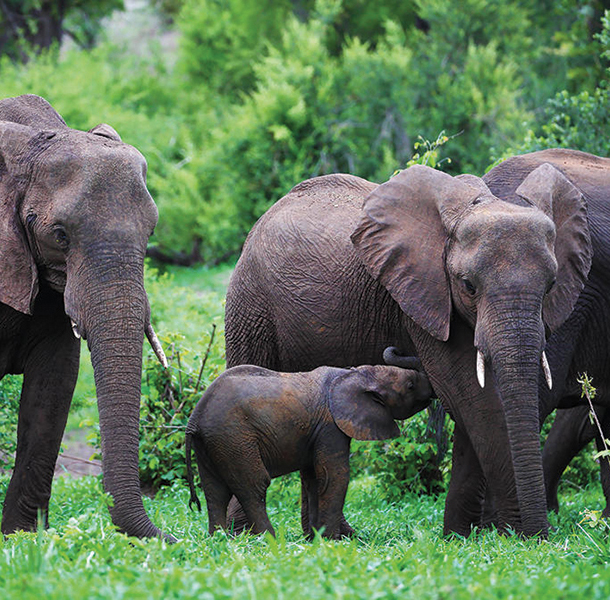

Zimbabwe, the landlocked country situated just above South Africa, and neighboring Mozambique, Zambia, and Botswana, was once as well-known as Kenya for its safaris. With a friendly, highly literate population; more than 13 percent of its land set aside for wildlife; some of the best guides on the continent; and a solid infrastructure, it had all the right ingredients to become the finest safari destination in the world.
Then a blip in the form of violent land grabs and a corrupt government, led by the freedom-fighter-turned-dictator Robert Mugabe, who passed away at the age of 95 in September, changed everything. As its cheery people will joke, the country turned “from being the breadbasket of Africa into the basket case of Africa.” Even before Mugabe’s presidency was toppled in 2017 (peacefully, by his own army), a new sense of optimism had started to permeate the country, and hoteliers and ground operators quietly started building camps, resorts, and a solid infrastructure.
The year Mugabe fell, more than 100,000 Americans visited Zimbabwe: almost a third of the country’s total number of tourists, according to Blessing Munyenyiwa, a board member of the Zimbabwe Tourism Authority.
The year before, a new airport large enough to accept international jets was opened in Victoria Falls, one of the world’s Seven Natural Wonders and the heart of Zimbabwe’s tourism industry. And across the country, some of the safari industry’s biggest names, such as Wilderness Safaris (wilderness-safaris.com), Singita (singita.com), Great Plains Conservation (greatplainsconservation.com), and African Bush Camps (africanbushcamps.com), have invested in refurbishments and new properties.
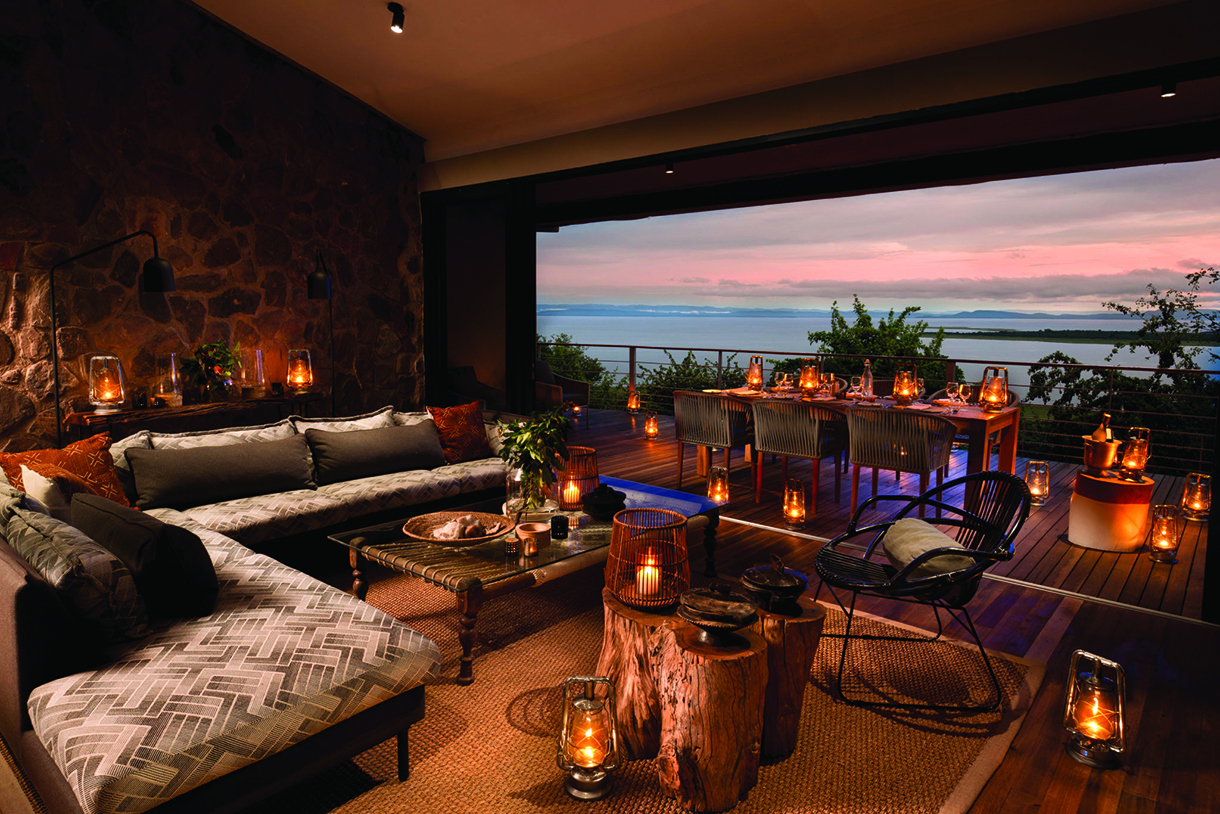
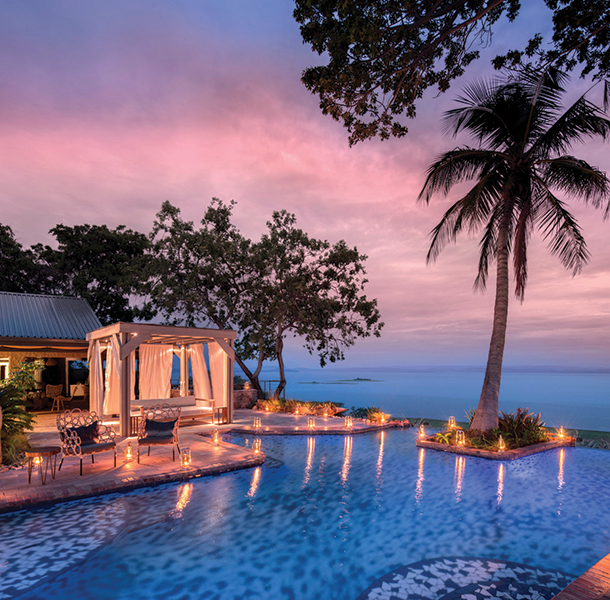
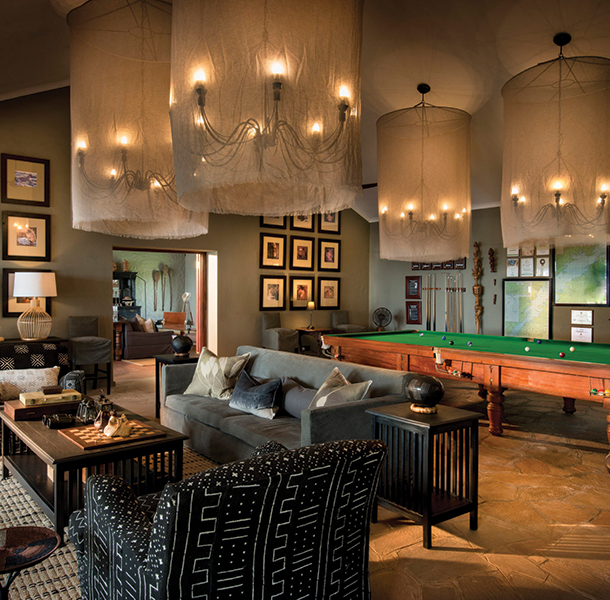
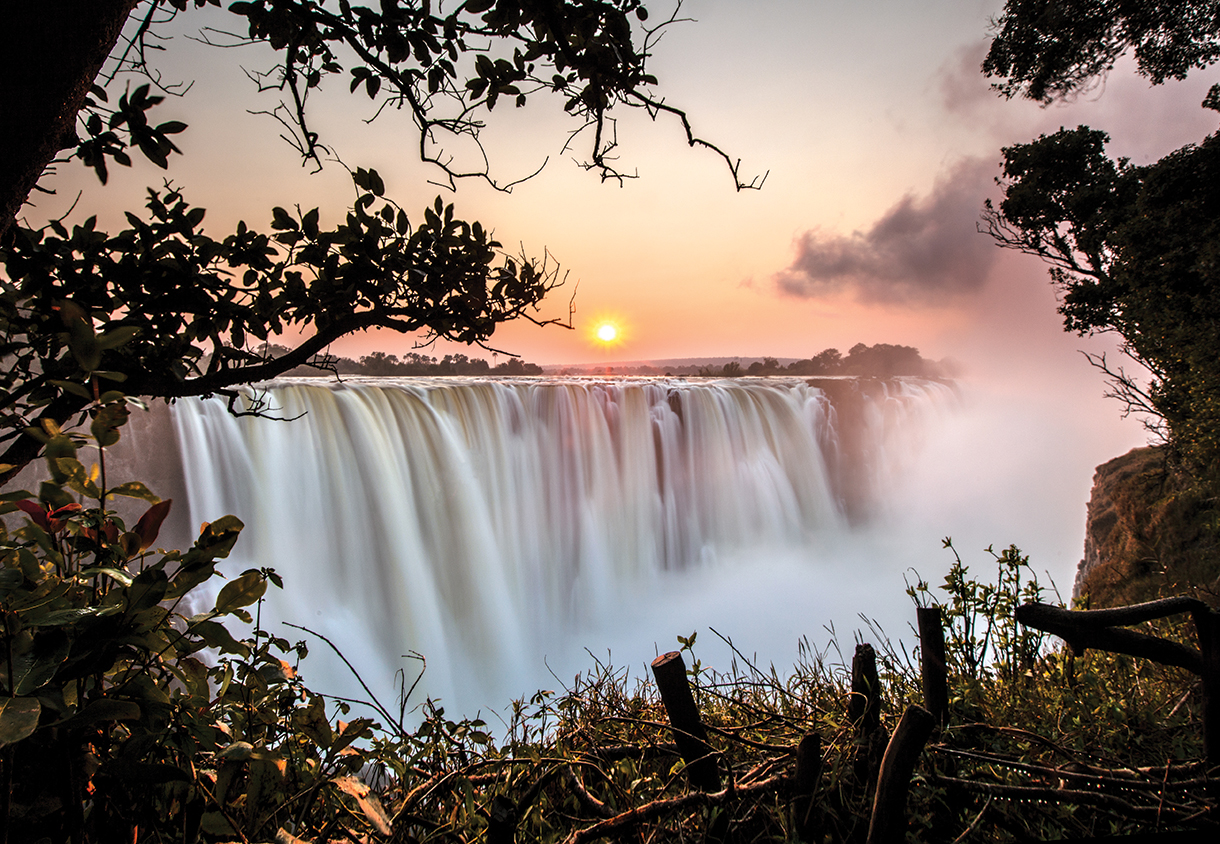
Deborah Calmeyer, the Zimbabwean-born CEO of Roar Africa, a New York– and Cape Town–based safari operator, has gone to the country several times per year over the past 40 years and put together the trip led by Gumpo for her clients. She says that, in spite of January’s unrest, this year the remote wilderness areas of the country will be “Africa’s hot new destination, particularly with so many new lodges opening in Victoria Falls.”
While 50 years ago there was just one place to stay in Victoria Falls, the colonial-style Victoria Falls Hotel, there are now more than 30 lodges and hotels to accommodate the half-million or so visitors who jetted in last year to see the largest waterfall in the world: a continually falling sheet of thundering water that’s twice as high and a third wider than Niagara.
While most of the little town throngs with day-trippers and adrenaline-seekers eager to bungee jump over the gorge, microlight over the falls, and white-water raft on turbulent rapids, quietude can be found just 25 miles away at Matetsi Victoria Falls (matetsivictoriafalls.com). Owned by a local businessman turned conservationist, John Gardiner, and efficiently overseen by his daughter, Sara, the 212-square-mile game reserve has both a 9-mile stretch of the Zambezi River from which to see riverine creatures and wide, open plains on which to spot the Big Five.
The 18-room contemporary lodge, with a four-bedroom private, exclusive-use villa at its heart, was designed by local architect Kerry van Leenhoff to be as natural and sustainable as possible. Buildings are clad in locally harvested wooden poles to provide shade on hot summer days.
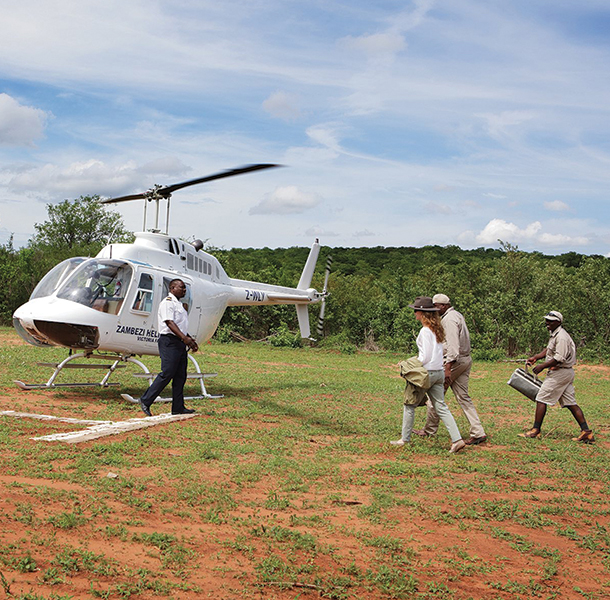
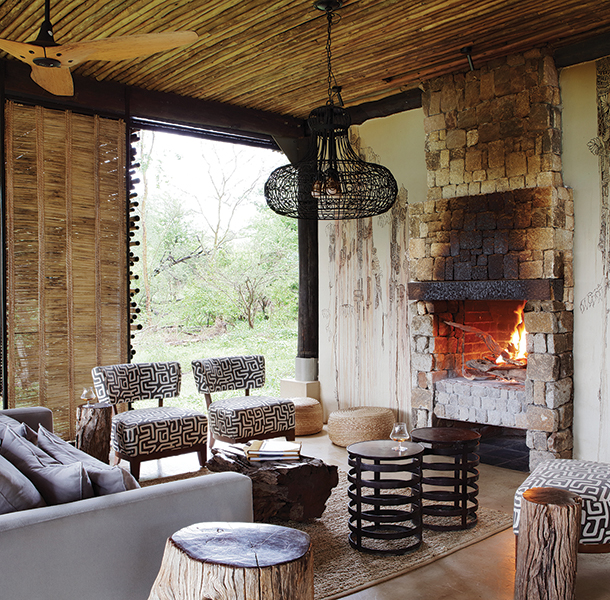
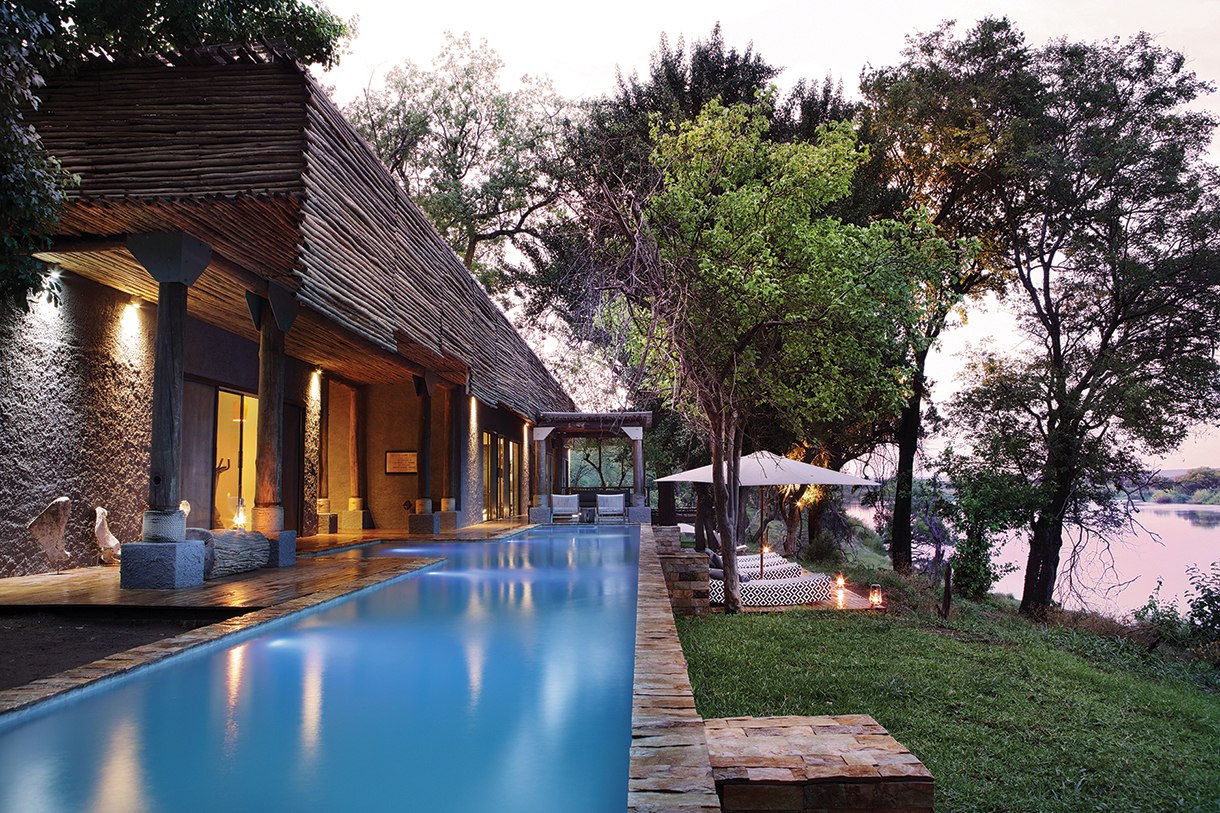
Chic furniture was hewn from indigenous logs and the bar is covered in hand-polished petals of local copper. Solar panels and a water-purifying plant contribute to sustainability efforts. “Zimbabwe has such a rich team of creative and talented people,” says Gardiner. “We wanted to build something to showcase that, whether that’s in design, guiding, or food.”
For Gumpo’s group, traveling by private plane to Victoria Falls, Hwange National Park, Lake Kariba, and the private Malilangwe Wildlife Reserve, the scenery at this time of year is as spectacular as the camp itself. It’s January and, across this part of southern Africa, isolated rainstorms regularly sweep across the vast, dramatic skies.
Following the rain, renewed plant life and insects arrive: red and blue dragonflies that hover like helicopters; thousands of flying ants that erupt from the earth at full moon; and exotic butterflies that flit and float between a short-lived explosion of flowers.
And in their wake come birds, from the tiniest, rainbow-hued bee-eaters to the majestic, pink-lidded giant eagle owls, which can become as exciting to see as lions and elephants. “Once you’ve seen the Big Five, then that’s ticked off,” explains Gumpo. “But there are so many exquisite birds at this time of year—in Victoria Falls, almost 500 species—that even people who didn’t think they were birders quickly become so.”
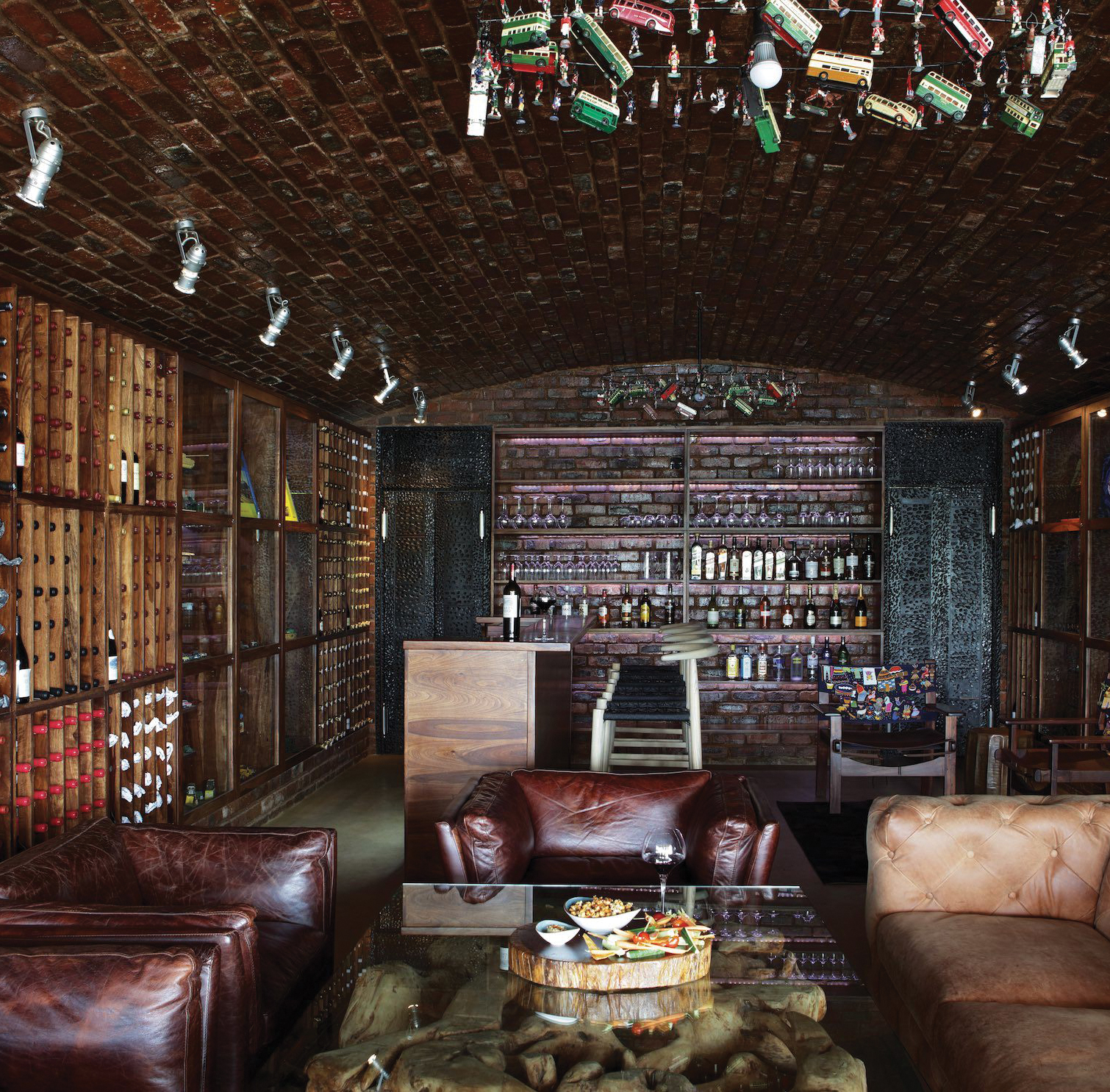
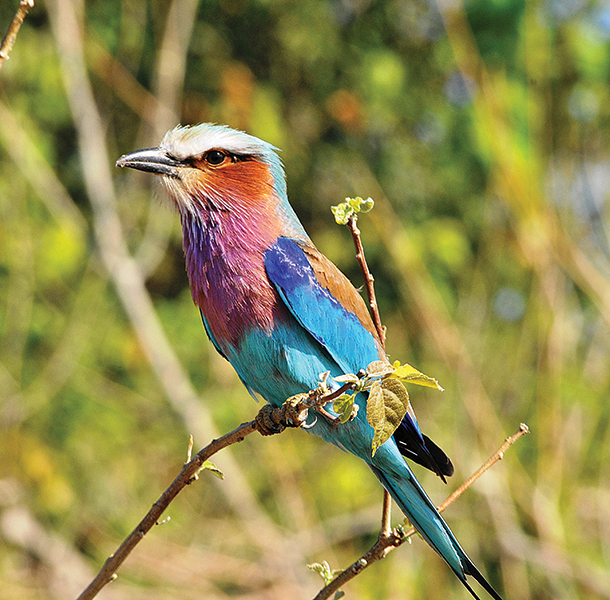

It’s not often that guests are prevented from checking in because of wild animals. But at Somalisa Camp (africanbushcamps.com) within Hwange National Park in a private concession, a 45-minute flight south from Matetsi by Cessna Caravan, lions are on the hunt right beside the tents, sending not only grazing zebra running, but also a couple of waiters back into the bar.
Somalisa is never short of wildlife, though, thanks in part to the three waterholes that front each of its three elegant tented camps. Hwange National Park has the second-highest diversity of wildlife in Africa after the Serengeti, and days here are generally spent driving in open-sided Land Cruisers through vast plains such as Ngweshla, where populations of buffalo, impala, kudu, wildebeest, and giraffe graze under the watchful eye of prides of lion, or, occasionally, a pack of wild dogs or a family of bat-eared foxes. “After game-viewing at Ngweshla, it’s hard to take guests anywhere else because they’ve been spoiled,” admits Gumpo, who typically sees a dozen species of mammals there in one day.
One of the advantages of traveling with one of Zimbabwe’s top guides, armed with an ever-inquiring mind, 20 years of bush experience, and a .22 rifle, is that at any stage (per the guide’s discretion), guests can get out of their vehicle and go walking—“to get up close and personal with nature,” as Gumpo puts it, “to smell it, feel it, hear it.”
One morning, after spotting a number of big elephants in the area, Gumpo’s group left their vehicles and hiked to the edge of a shaded teak forest, where they watched five bull elephants nibbling on fresh vines.


Then later, they saw the beasts heading for one of Somalisa’s pools and walked to a protected spot some 10 feet away, where, sipping glasses of South African shiraz, they watched, silent and immobile, as the herd jostled and slurped, then disappeared into the dark, moonless night.
Although today in Zimbabwe there are several safari camps as comfortable, stylish, and polished as those in neighboring Botswana and South Africa, there is one property that stands out above the rest, Singita Pamushana Lodge (singita.com). In 1994, the 203-square-mile former farm in the country’s southeast region was converted into a private wildlife concession bordering Gonarezhou National Park. Today, under the management of the respected Singita brand, and its land and game protected by the Malilangwe Trust, the destination has become a model not only of how luxury camps should be run but of how to protect wildlife and landscapes by involving local communities in projects that range from a feeding program for 20,000 preschool children and a community computer center to local game-scout training.
Singita Pamushana’s legendary guide Tyme Mutema accompanies Gumpo’s group one morning as they creep up behind a log near a white rhino, so close they can all hear the gnashing of the beast’s teeth munching on grass.
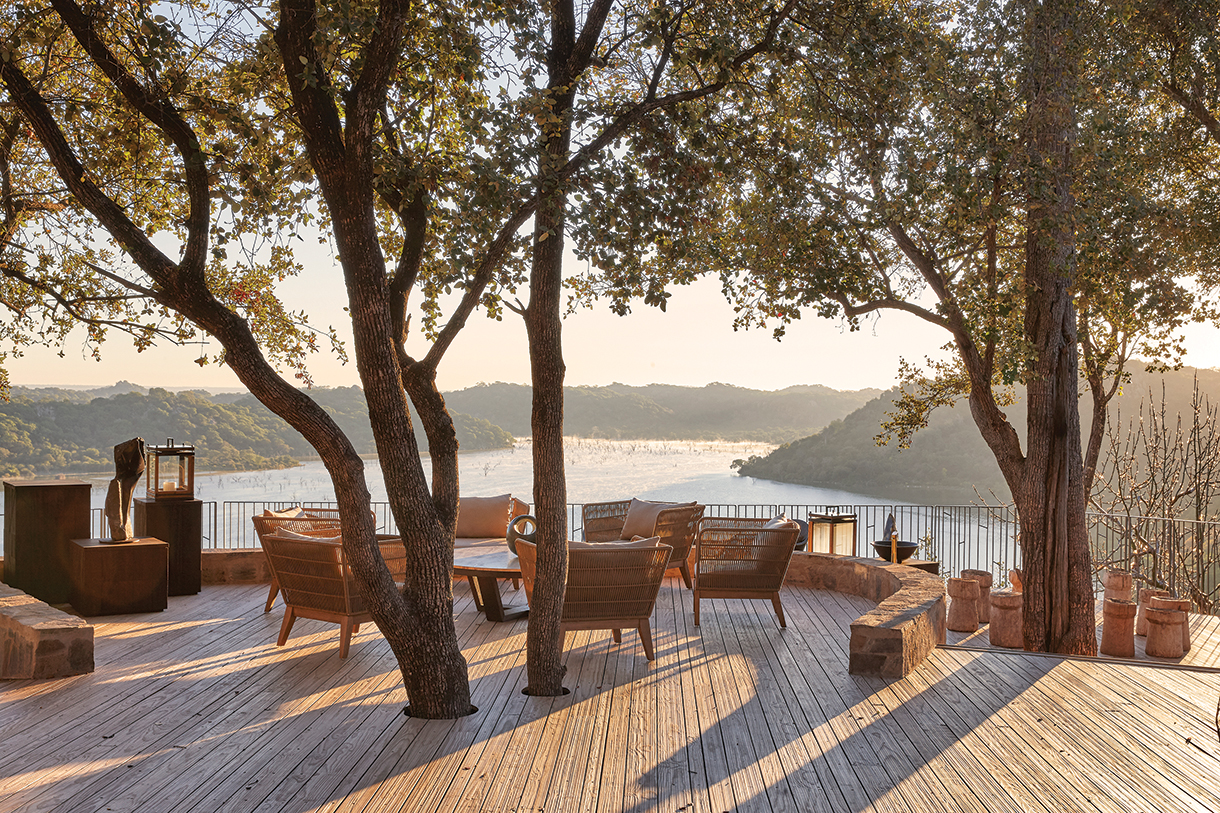
At the end of each full day, tracking rhino, watching wild dogs hunting, listening to cheetah chewing on a newly caught impala, and spotting a leopard walking along a road, Gumpo’s guests are more than happy to retire to the glamorous stone-walled lodge, set atop a hill scarred with sandstone outcrops and bristling with giant baobabs.
Designed by the respected South African designers Cècile and Boyd, the thatched camp is every bit as elegant as Singita’s other properties in Tanzania and South Africa, but with a strong Zimbabwean style. Pillars are intricately inlaid with colorful, handmade mosaics. Stone walls are adorned with abstract African art. Every surface holds something beautiful: beaten brass pots, intricately beaded Shangaan fabrics, or carved boxes. Then there are the triple-height cottages with plunge pools; the delicious, fresh food; the spa treatments using organic African oils; and camp beds set out on decks at night so guests can sleep out under the Milky Way.
It is a place, says lodge manager Emily Capon, that guests return to again and again, and not only for the wildlife. “So often we are told that on the news people hear only negative things about Zimbabwe, and yet when they come here, they encounter only kindness and generosity and pristine natural spaces. We’re often told we’re the friendliest people in Africa. Being Zimbabwean, I can’t judge, but it’s always lovely to hear.”
When hugs are exchanged on the gravel runway, as guests prepare for their short flight to Johannesburg and then home, it’s clear that they’ll all be back. Gumpo now has his pilot’s license and all anyone can talk about are the places he can show them next as a pilot-guide. “You haven’t seen Mana Pools yet, and that’s my favorite place on earth,” he says. “So, we will keep that for next time. In Zimbabwe we never say goodbye to people, because there is always a next time. So kufamba zvakanaka (travel well) and see you then.”

